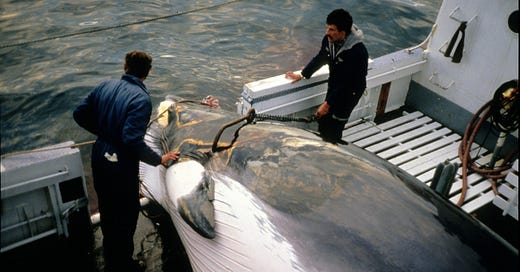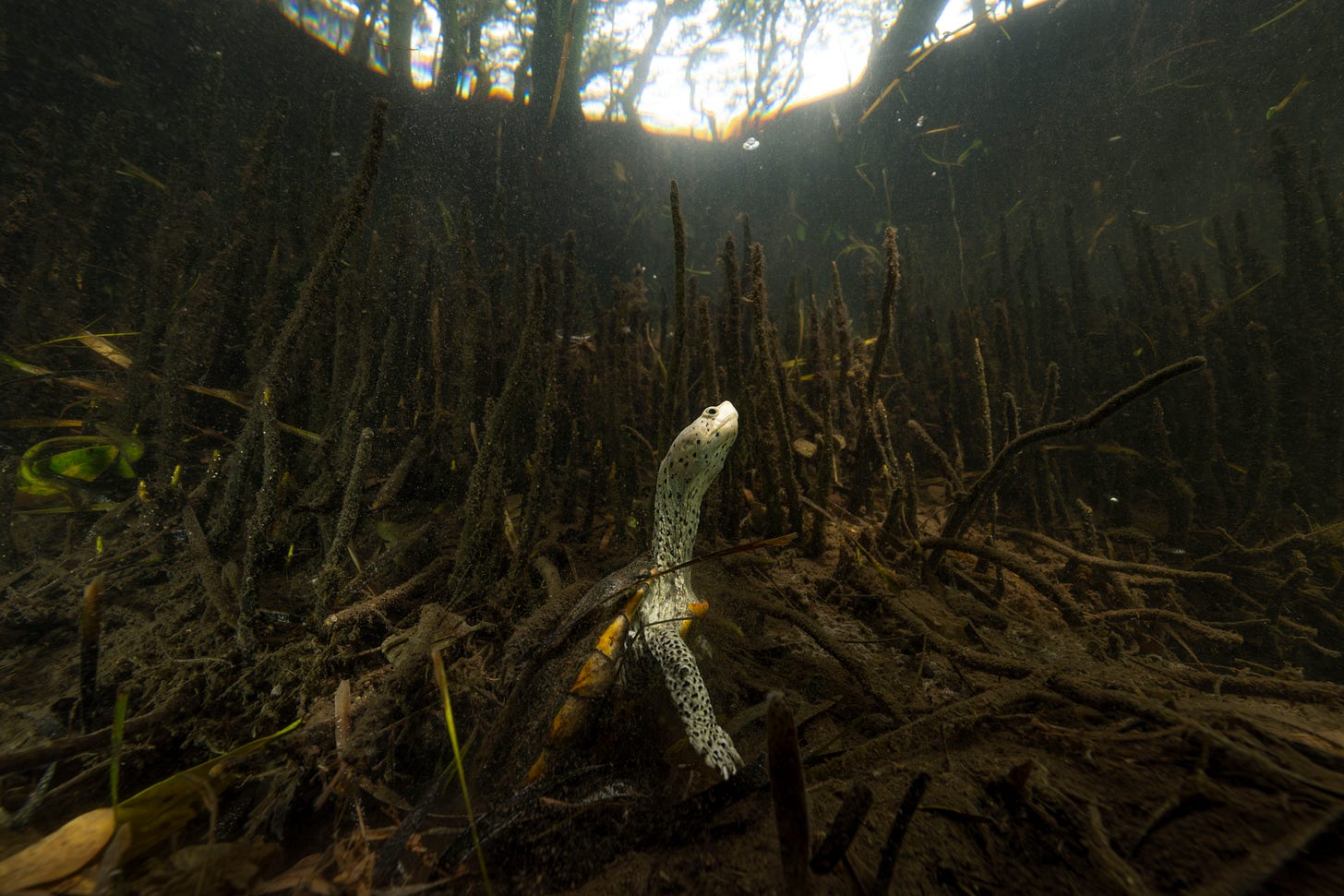Norway's whaling quota, whale song patterns, and a calf-spotting breakthrough
Big Blue Bulletin #43
A slightly different introduction on the Big Blue Bulletin today as this week I found out I’m being made redundant (laid off). It's unfortunate timing given I just committed to a flat in Edinburgh (which has already been somewhat of a headache with still unresolved issues!). I had intentions to leave my job someday soon anyway, but being kicked out of the door rather than leaving on my own terms feels rather abrupt and quite scary.
That said, I’m committed to continuing Beached amidst the job hunt. So if you've ever considered upgrading to a paid subscription, now would be a really helpful time to commit—but either way, your support means a lot.
Also, if you or anyone you know needs help with comms or social media, I’m available! I have years of experience growing followings on Instagram, TikTok, Facebook, Bluesky, and of course, Beached! Whether you need pay-by-the-hour support or something more permanent, feel free to reach out.
Ocean news
🗞️ Big news of the week -
🇳🇴 Government in Norway to allow killing of more whales
Norway’s government has raised its 2025 minke whale hunting quota to 1,406 whales—a significant jump from last year’s 1,157. This comes despite declining demand for whale meat and growing opposition to the country’s commercial whaling.
Norway continues to hunt whales by objecting to the global ban on commercial whaling, justifying the practice with claims that whales compete with fisheries and that their killing is done “humanely.” In reality, neither is true. The so-called “humane” slaughter has been disproved by Norwegian research itself showing that some whales suffer for up to 25 minutes after being harpooned.
With fewer Norwegians eating whale meat, it’s the government propping up the industry, with much of the catch ending up in Japan. The whaling industry isn’t what it once was—but decisions like this keep it going far longer than it should.
🔍 Five-hour trips launched to spot and survey whales
Whale-watching in Cornwall could be getting an upgrade as A K Wildlife Cruises launch five-hour trips offshore to spot and survey whales. Sailing 20 to 35 miles out to sea, the intention is to use citizen science to expand sightings data and strengthen support for whales and other wildlife in the area.
Manager Cameron Molland emphasised that animal welfare comes first, with all sightings reported to conservation groups. “We work with a lot of organisations to push for tighter protections,” he said.
The idea comes after recent sightings drew huge crowds—especially after a humpback whale appeared off Newquay. As Molland puts it: "Whales are really cool." It’s hard to argue with that.
🎶 Whales sing when they’ve had a good meal
New research suggests that whale songs could be a key indicator of ecosystem changes. By analysing six years of acoustic data from blue, fin, and humpback whales off the US West Coast, researchers found that shifts in whale song patterns closely followed changes in their food supply.
Humpback whale songs more than doubled over the study period, increasing from 34% to 76% of days—with their singing behaviour reflecting fluctuations in krill and anchovy populations. Fin whales showed a similar trend, adjusting their song patterns in response to changing krill abundance.
Blue whales, however, only eat krill, and their song detections plummeted when krill numbers dropped. Since baleen whales rely on feeding grounds to fuel their long migrations, these findings highlight how closely their behaviour is tied to ocean conditions.
🐋 New study suggests blue whale calf-spotters 'have it all wrong'
Blue whales are the largest animals to have ever lived, yet in all of human history, only two births have ever been recorded. Given the sheer number of whale researchers, spotters, and improved tracking technology, it’s baffling that we’ve yet to witness any more than this.
A new study from the University of Washington, published in Endangered Species Research, suggests the answer may be rather simple: we’ve been looking at the wrong time of year.
Professor Trevor Branch and his team analysed decades of field studies and historical whaling records to map where blue whales gather in summer and winter. Pregnancy rates estimated at 33–50% so sightings of mother-calf pairs should have been far more common. Instead, researchers have only been monitoring blue whales after they’ve likely given birth—meaning these ocean giants may have been hiding their newborns in plain sight all along.
🐬 Morgan the captive orca is pregnant
Morgan, an orca rescued from the wild but never returned, is reportedly pregnant again at Loro Parque in Tenerife, where she has been held for over a decade.
This isn’t the first time. In 2018, Morgan gave birth to Ula, who tragically died just weeks before her third birthday. Ula is one of four orcas to have died at the facility in recent years.
In the wild, orca mothers and calves stay together for life, forming tight-knit family bonds. Captivity can’t replicate the space, social structures, or emotional support they need, yet Morgan—originally rescued with the hope of rehabilitation—remains confined.
Have a great weekend! 📸
Cover image by Whale and Dolphin Conservation.






Whales singing in conjunction with food and conditions is very like humans, I believe, singing or whistling when we’re in a good mood. I recall reading something about elephants emitting low rumbling as greetings to others. So many ways we are connected to the world.
I’m half Norwegian on my Dad’s side and I imaging he is rolling in his grave right now! He was a scientist and engineer whose work focused on measuring underwater man made sound and how it impacted whales and dolphins, especially their migratory patterns. This is a sad day to think more whales will be slaughtered. Come on, Norway- stop killing whales.